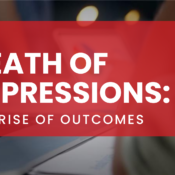/
/
The Paradox of Choice – And What it means for Customer Service
In any given grocery store there might be as many as 100 different salad dressings, 200 cookie assortments, 300 cereal choices and 40 toothpaste variations. Of all the choices waiting for us out there, it seems like a consumer can easily be tormented by the possibility of making the wrong choice.
And we’re only talking about salad dressing.
Accepted Dogma of Choice
Psychologist Barry Schwartz focuses on this very feeling that often plagues consumers. Featured in a TED talk, as well as described in his book, “The Paradox of Choice: Why More is Less,” Schwartz claims the accepted belief to be that the way to maximize freedom is to maximize choice. The more choice people have, the more freedom they have; the more freedom they have, the happier they are.
Seems true in theory...right?
Schwartz explores the opposing idea that because consumers are faced with so many choices to select from, it creates a greater chance of buyer’s remorse. This can be as true for low involvement purchases like salad dressing as it is for high involvement decisions such as buying a new vehicle.
In the United States alone, there are more than 40 distinguished car brands, and millions of cars are produced annually. With so many choices, it makes room for the question - did I make the right one? This should in turn beg the question - what can producers do to make sure this feeling doesn't occur?
Consumer Decision Process
Experts in this area have identified a fairly simplistic process that consumers typically go through with a high involvement purchase - in this case a vehicle.
It begins with the recognition of a need. A consumer will then search for information on this need, evaluate alternatives and consume their top choice.
But it doesn’t end there, for the consumer or the provider. Sometimes, what the producer does during post-purchase considerations can mean the difference between retaining a customer and having to reach a new one.
Customer Service
Perhaps this department is viewed from the wrong perspective. Instead of waiting to field questions, complaints or concerns, customer service should be more proactive.
Investing thousands of dollars into a vehicle can cause anxiety. And as important as it is to “seal the deal” with a customer, why not go a step further and help them relieve that tension with follow-up calls or knowing a vehicle’s service history when it comes in later on? These are the little things that resonate with customers the most, and will keep them coming back even after they’ve driven off the lot.
To watch the full Barry Schwartz TED Talk, click here.
Recent Posts
Mudd Advertising
Mudd Advertising is Partnering with Equifax
Mudd Advertising
Personalization at Scale—Not Just a Buzzword
Mudd Advertising
The Death of Impressions: The Rise of Outcomes
All Categories
Tags
aia ads
automotive
ctv
digital marketing
direct mail
direct marketing
display
display ads
dynamic inventory display
email
email marketing
EV marketing
facebook
gbp
google analytics
google my business
google my business inventory
google shopping ads
internet marketing
local seo
MUDDid
mudd id
online marketing
pay per click
performance max
pmax
pop
ppc
radio
retargeting
search engine marketing
search engine optimization
sem
seo
social
social media
social media marketing
traditional marketing
traditional media
ux management
vehicle listing ads
video advertising
video production
vla
web ux




